
Chobe National Park
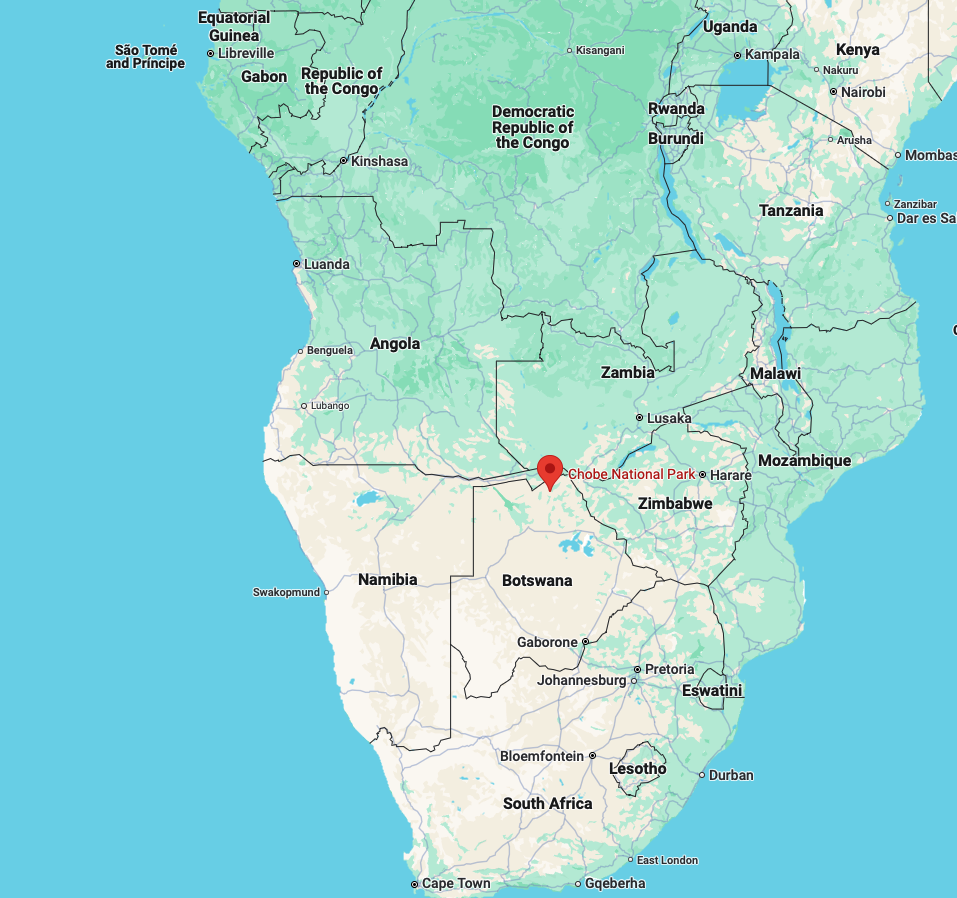
Credit: Google Maps
Where is Chobe National Park?
Chobe National Park, Botswana's first national park, is located in the northern part of the country, bordering Namibia, Zimbabwe, and Zambia. This strategic location at the heart of the Kavango–Zambezi Transfrontier Conservation Area makes it a crucial part of one of the world's largest conservation zones.
The park covers an area of approximately 11,700 square kilometers (4,517 square miles), stretching from the Chobe River in the north to the Moremi Game Reserve in the south. Its northern boundary is formed by the Chobe River, which also serves as the border between Botswana and Namibia's Caprivi Strip.
To reach Chobe, most visitors fly into Kasane Airport, which serves as the main gateway to the park. From there, it's a short drive to the park entrance and various lodges. For those combining their visit with other destinations, Chobe is easily accessible from Victoria Falls (about a 1.5-hour drive) and can be included in itineraries that also cover the Okavango Delta.
What makes Chobe National Park unique compared to other African parks?
Chobe National Park stands out among African safari destinations for several reasons:
1. Elephant Paradise: Chobe is home to the world's largest elephant population, with an estimated 120,000 of these magnificent creatures. The sight of hundreds of elephants gathered along the Chobe River is truly awe-inspiring.
2. The Chobe River: Unlike many other parks, Chobe's lifeblood is its namesake river. This creates a unique riparian ecosystem that supports an astounding diversity of wildlife, especially during the dry season when animals congregate along its banks.
3. Diverse Ecosystems: The park encompasses four distinct ecosystems - the Chobe Riverfront, the Ngwezumba pans, the Savuti Marsh, and the Linyanti Swamps. Each area offers a different landscape and unique wildlife viewing opportunities.
4. Water-Based Safaris: The Chobe River allows for boat cruises, providing a different perspective on wildlife and excellent photographic opportunities.
5. Accessibility: Its proximity to Victoria Falls makes it easy to combine a Chobe safari with visits to other iconic African destinations.
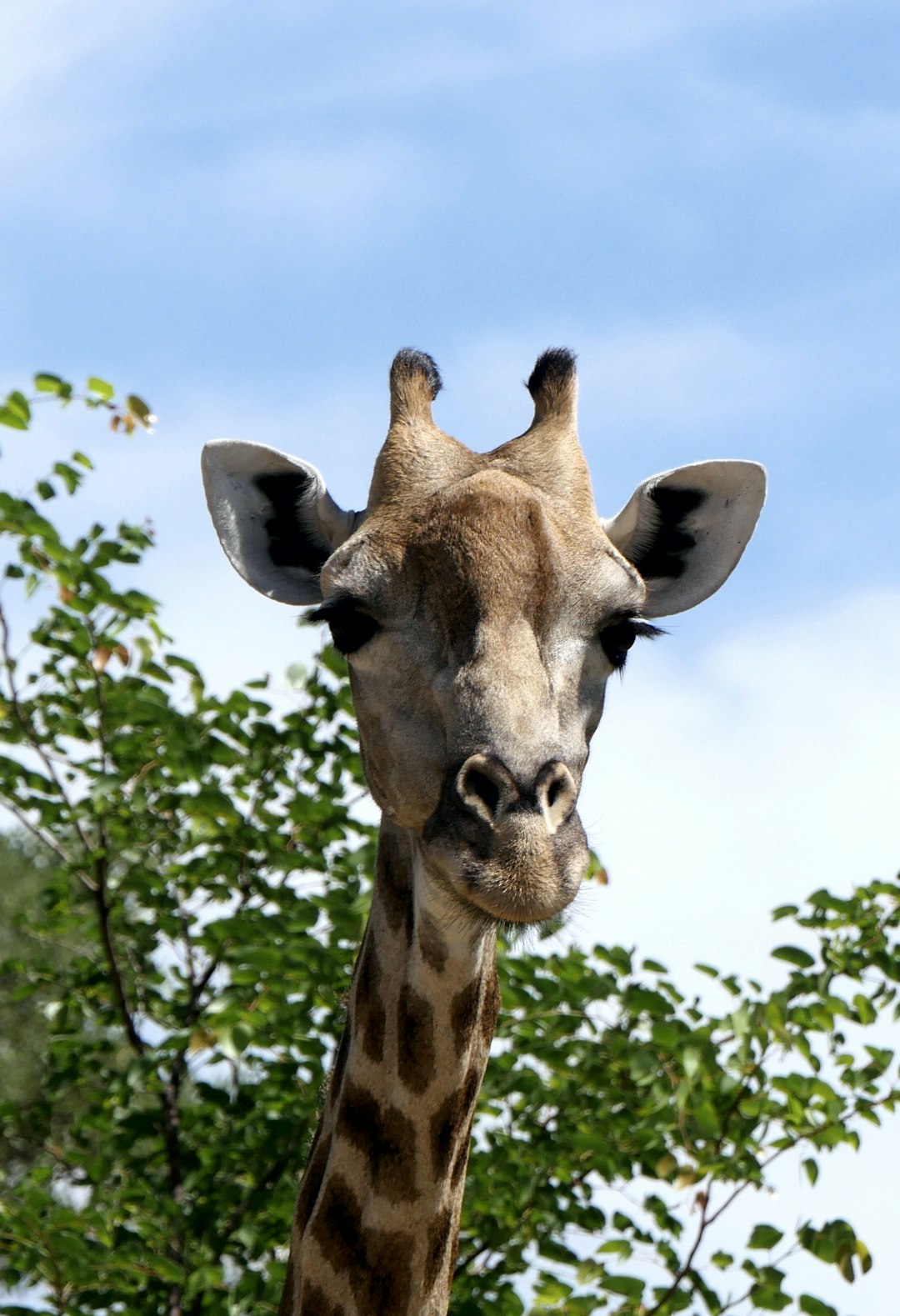
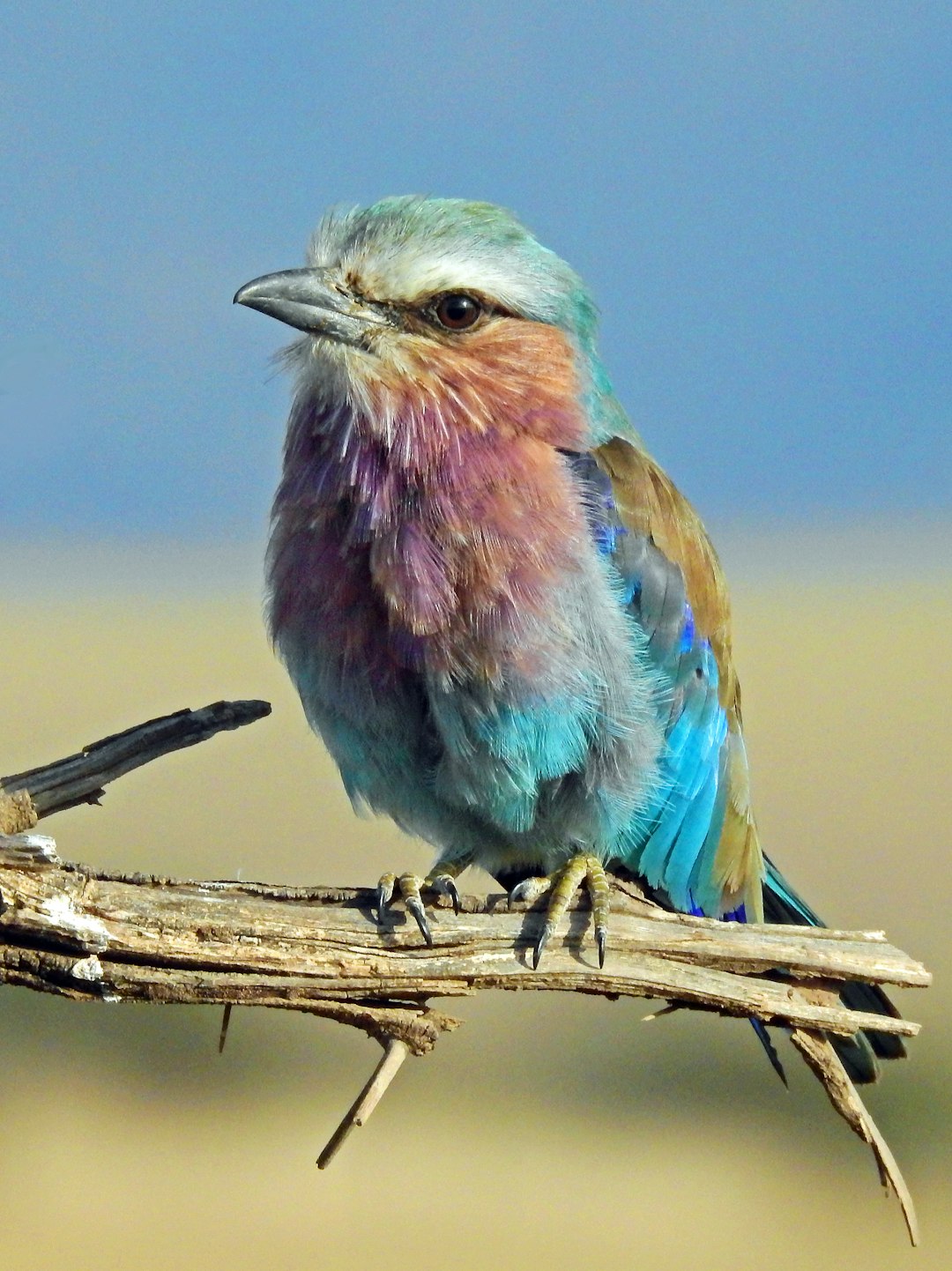
What wildlife can I expect to see on a safari in Chobe National Park?
Chobe National Park offers some of the most diverse and abundant wildlife viewing in Africa. Here's what you might encounter:
- Elephants: The park's claim to fame, with the highest concentration of elephants in Africa.
- Big Cats: Lions, leopards, and occasionally cheetahs can be spotted. The Savuti area is particularly known for its lion prides.
- Antelopes: From the majestic kudu to the water-loving red lechwe, Chobe hosts a variety of antelope species.
- Buffalo: Large herds are often seen along the Chobe River.
- Hippos and Crocodiles: Abundant in and along the Chobe River.
- Giraffes: Frequently spotted in the drier areas of the park.
- Wild Dogs: These endangered predators are sometimes seen in the Linyanti area.
- Birdlife: With over 450 recorded species, Chobe is a birdwatcher's paradise. Look out for the African fish eagle, the colorful carmine bee-eater, and the rare African skimmer.
- Zebras: Large herds can be seen, especially during their annual migration to the Savuti Marsh.
- Warthogs, Hyenas, and Various Monkey Species: These add to the diverse cast of characters you'll encounter.
Remember, wildlife sightings can never be guaranteed, but the abundance and variety of animals in Chobe make it one of the best places in Africa for game viewing.
When is the best time to visit Chobe National Park?
The best time to visit Chobe National Park depends on what you want to experience. Here's a breakdown of the seasons:
Dry Season (May to October):
Best for wildlife viewing as animals congregate around water sources
Cooler temperatures, especially in the mornings and evenings
Less vegetation makes it easier to spot animals
Peak tourist season, especially July to October
Wet Season (November to April):
- Lush green landscapes and excellent for bird watching
- Fewer tourists and lower prices
- Some areas may become inaccessible due to rains
- Wildlife more dispersed but still plentiful
For most visitors, the dry season (especially June to October) offers the best wildlife viewing opportunities.
However, each season has its unique charm:
- May-August: Pleasant temperatures, good wildlife viewing
- September-October: Peak game viewing, but very hot
- November-April: Green season, great for birding and baby animals
Remember, Chobe is a year-round destination, and there's always something spectacular to see, regardless of when you visit.
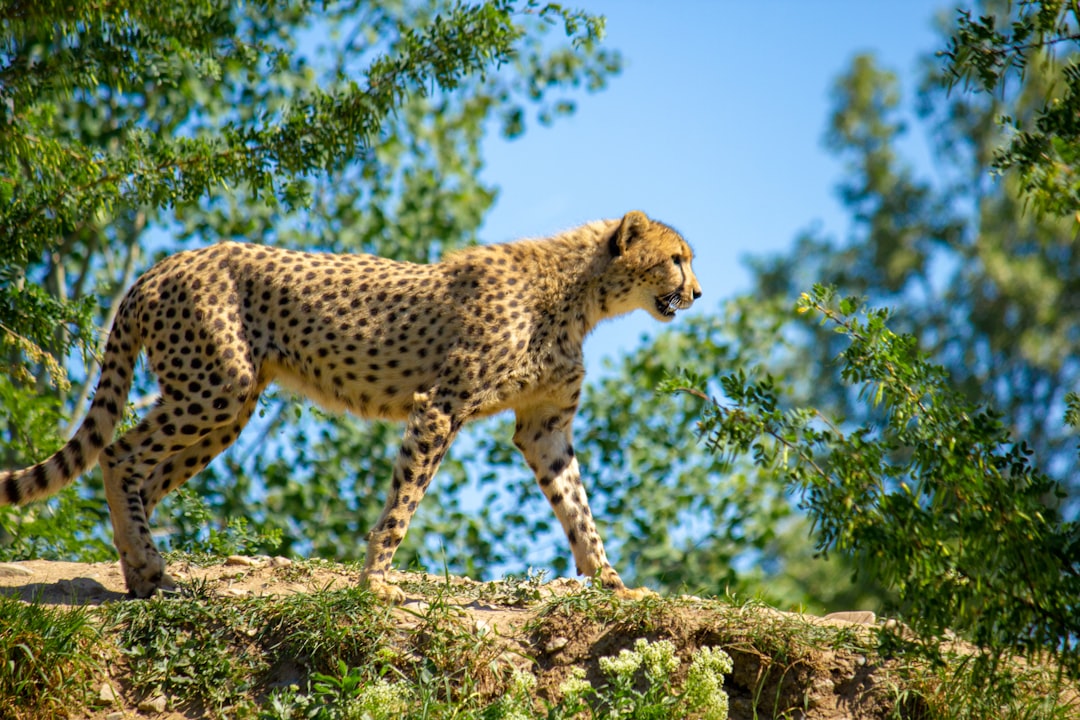

Discover Chobe's Wonders
Plan your safari adventure with our expertly crafted Chobe National Park itinerary.
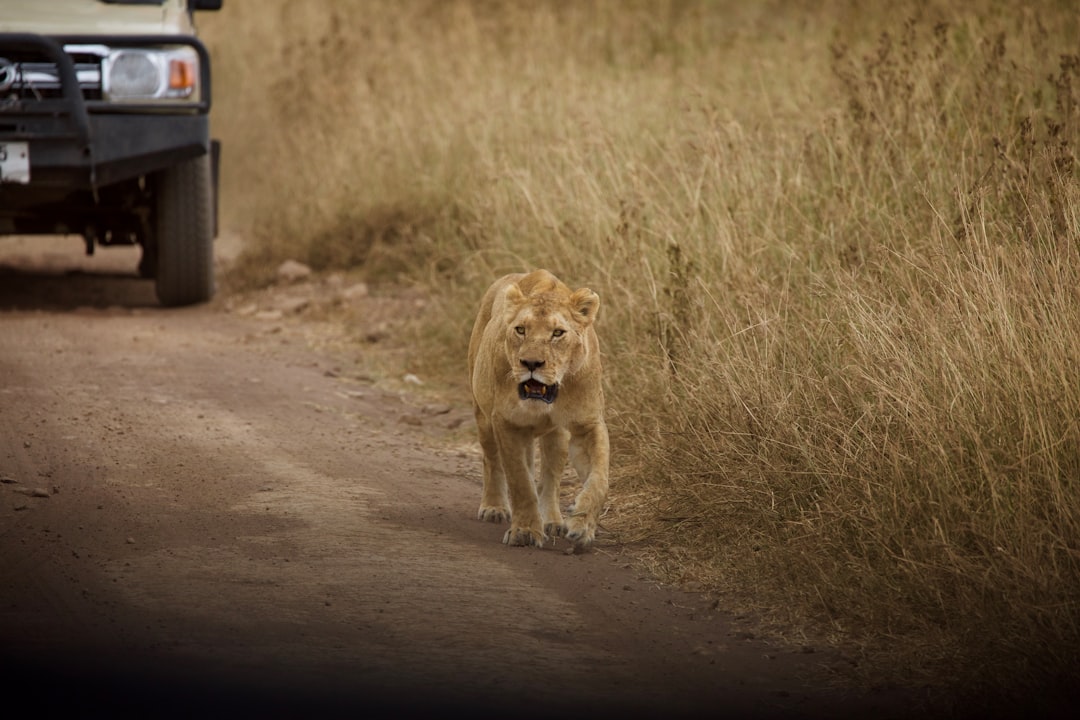
How do the different regions of Chobe National Park offer distinct wildlife experiences?
Chobe National Park is divided into four distinct areas, each offering a unique safari experience:
Chobe Riverfront:
- Famous for its large elephant herds
- Excellent for boat safaris and game drives
- Best for seeing hippos, crocodiles, and water birds
Savuti:
- Known for its predators, especially lions
- Unique landscape with the Savuti Channel and marsh
- Great for seeing wild dogs and cheetahs
Linyanti:
- Less visited, offering a more exclusive experience
- Good for seeing rarer species like sable antelope
- Excellent bird watching opportunities
Ngwezumba Pans:
- Remote area with fewer tourists
- Interesting geological features
- Good for seeing desert-adapted species
Each area has its own character and wildlife patterns, allowing visitors to experience different facets of the Botswana wilderness within one park.
What are the best ways to spot predators in Chobe National Park?
Spotting predators in Chobe National Park requires patience, timing, and a bit of luck. Here are some tips:
1. Early Morning and Late Afternoon Game Drives:
- Predators are most active during cooler hours
- Look for lions resting after a night's hunt
2. Night Drives:
- Offered in some areas, great for spotting nocturnal predators like leopards
3. Follow the Prey:
- Where there are large herds of antelope or buffalo, predators are often nearby
4. Listen for Alarm Calls:
- Animals like baboons or impalas will alert you to nearby predators
5. Scan the Trees:
- Leopards often rest in trees during the day
6. Visit Savuti:
- Known for its high concentration of lions and other predators
7. Use an Experienced Guide:
- Local guides know the best spots and can read subtle signs
8. Be Patient:
- Sometimes, waiting quietly in one spot can yield the best sightings
Remember, predator sightings are never guaranteed, but these strategies can increase your chances of witnessing these magnificent animals in their natural habitat.
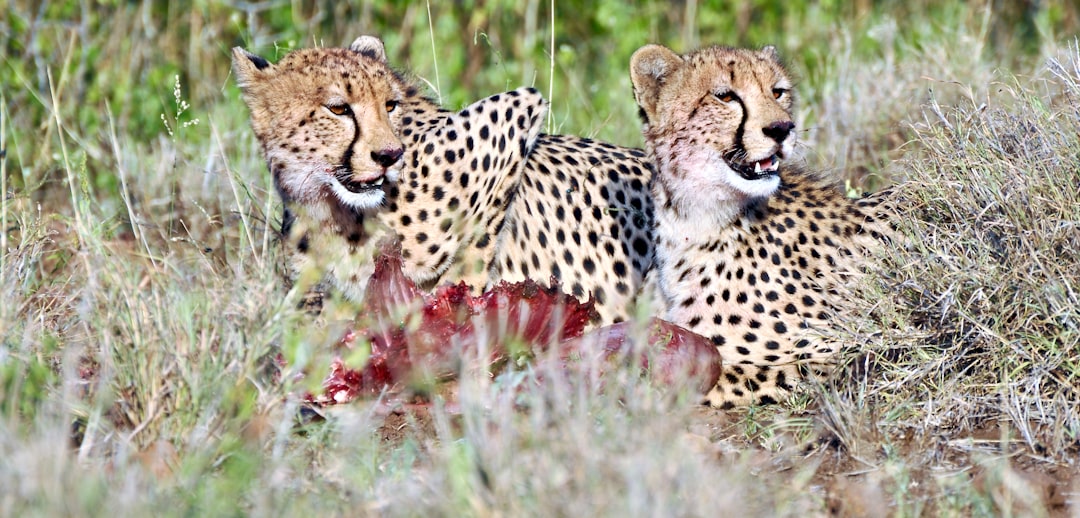
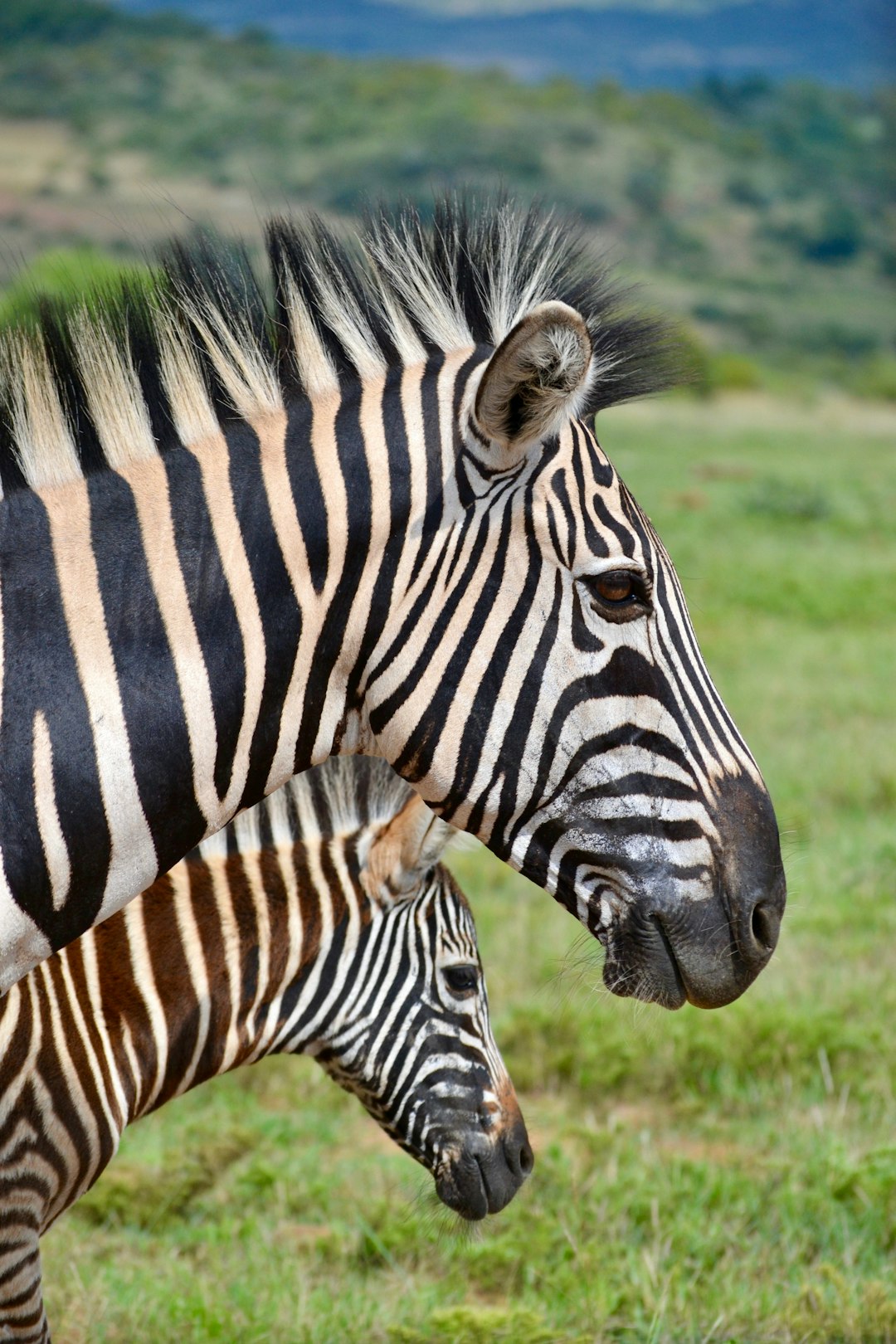
What are some lesser-known facts about Chobe National Park?
While Chobe is famous for its elephants and diverse wildlife, there are many fascinating aspects of the park that are less well-known:
1. Cartographer's Error: Chobe was originally designated as a game reserve in 1960 due to a cartographer's mistake that made the area appear larger than it actually was.
2. Unique Antelope: The puku, a medium-sized antelope, is found almost nowhere else in Botswana except along the Chobe River.
3. Ancient Human History: Stone tools and other artifacts found in the park suggest human habitation dating back thousands of years.
4. Volcanic Activity: The Ngwezumba pans in the south of the park were formed by ancient volcanic activity.
5. Savuti Channel Mystery: The Savuti Channel has a history of unexplained drying and flowing, baffling scientists for years.
6. Zebra Migration: The park hosts the second-largest zebra migration in Africa, though it's less known than the famous Serengeti migration.
7. Tree-climbing Lions: The Savuti area is known for its unusual tree-climbing lions.
8. Fishing Ban: To protect the ecosystem, fishing is not allowed in the Chobe River within the park boundaries.
9. Four-country View: From certain points in Chobe, you can see four countries at once: Botswana, Namibia, Zambia, and Zimbabwe.
10. Elephant Management: Chobe has been at the forefront of elephant management and conservation research for decades.
These lesser-known facts add depth to the Chobe experience, reminding us that there's always more to discover in this remarkable wilderness.
How has conservation efforts impacted the wildlife in Chobe National Park?
Conservation efforts have played a crucial role in shaping Chobe National Park's thriving ecosystem:
1. Elephant Population Growth: Thanks to strict anti-poaching measures and habitat protection, Chobe's elephant population has grown from just a few thousand in the 1960s to over 120,000 today.
2. Return of Endangered Species: Species like the African wild dog have made a comeback in Chobe due to conservation efforts and the park's vast, protected spaces.
3. Sustainable Tourism: The implementation of eco-friendly lodges and responsible tourism guidelines has helped minimize human impact on the park's delicate ecosystems.
4. Community Involvement: Local communities are involved in conservation efforts, reducing human-wildlife conflict and promoting sustainable use of resources.
5. Research and Monitoring: Ongoing scientific studies help park managers make informed decisions about wildlife management.
6. Anti-Poaching Measures: Increased patrols and severe penalties for poaching have significantly reduced illegal hunting.
7. Transfrontier Conservation: Chobe's inclusion in the Kavango–Zambezi Transfrontier Conservation Area allows for better management of migratory species.
8. Water Management: Efforts to maintain the Chobe River's flow and quality have ensured the survival of countless species dependent on this vital water source.
9. Fire Management: Controlled burning helps maintain habitat diversity and prevents destructive wildfires.
10. Education Programs: Both tourists and local communities are educated about conservation, fostering a culture of environmental stewardship.
These conservation efforts have transformed Chobe into a success story, demonstrating the positive impact of dedicated wildlife protection and sustainable management practices.


What activities are available in Chobe National Park?
Chobe National Park offers a variety of activities to suit different interests:
1. Game Drives: The classic safari experience, exploring the park in open 4x4 vehicles.
2. River Cruises: A unique way to view wildlife from the Chobe River, especially popular for elephant sightings and bird watching.
3. Photographic Safaris: Specialized boats with swivel chairs and camera mounts for optimal wildlife photography.
4. Walking Safaris: Offered in some areas, providing an on-the-ground perspective of the ecosystem.
5. Fishing: Catch-and-release fishing trips on the Chobe River (outside park boundaries).
6. Bird Watching: With over 450 species, Chobe is a paradise for birders.
7. Cultural Tours: Visit nearby villages to learn about local culture and traditions.
8. Hot Air Balloon Safaris: Available in some areas, offering a breathtaking aerial view of the park.
9. Night Drives: In certain areas, allowing glimpses of nocturnal wildlife.
10. Mokoro (Traditional Canoe) Trips: In the Selinda Spillway area during high water seasons.
Each activity offers a different perspective on Chobe's diverse ecosystems and wildlife, allowing visitors to craft a safari experience that matches their interests and comfort levels.
In conclusion, Chobe National Park offers a safari experience that engages all the senses and leaves an indelible mark on the soul. From the thunderous footfalls of elephant herds to the silent grace of a leopard, from the earthy scent of the African bush to the taste of sundowners as the sky explodes in color, Chobe is a place where the magic of the wild is palpable at every turn. Whether you're a first-time safari-goer or a seasoned wildlife enthusiast, Chobe promises adventure, wonder, and the chance to connect with nature in its purest form. As you plan your visit to this remarkable corner of Botswana, remember that in Chobe, every day brings new discoveries, and every moment holds the potential for magic.